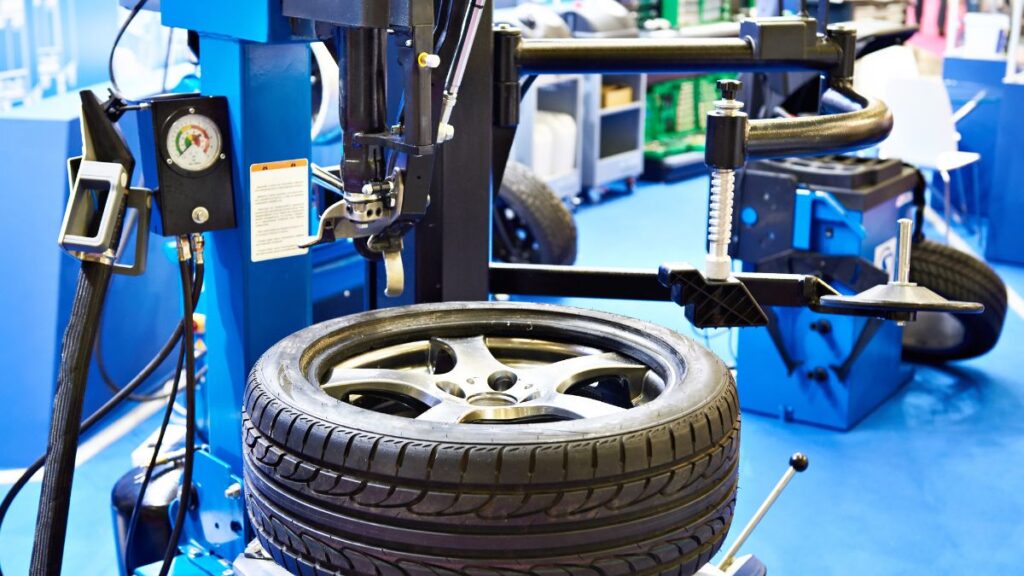Remote work has seen unprecedented growth over the past decade, propelled further by global events such as the COVID-19 pandemic. As organizations continue to adapt to a more distributed workforce, technology has played a crucial role in bridging the gap between physical separation and collaborative efforts. Among the most exciting developments in this space is the advent of holographic workspaces, which promise to revolutionize remote collaboration in tech. This article explores the concept, benefits, technological advancements, applications, and future prospects of holographic workspaces.
1. Introduction to Holographic Workspaces
Holographic workspaces utilize holography—a technique that records and reconstructs light to produce three-dimensional images—to create interactive, virtual environments. These workspaces enable remote teams to collaborate as if they were physically present in the same room. Unlike traditional video conferencing or virtual reality (VR), holographic workspaces offer a more immersive and realistic experience, allowing for natural interactions and a better sense of spatial awareness.

2. The Evolution of Remote Collaboration Tools
Remote collaboration tools have evolved significantly over the years. Initially, simple communication platforms like email and chat applications were the norm. As technology progressed, video conferencing tools such as Zoom, Microsoft Teams, and Slack became essential for virtual meetings and real-time collaboration. However, these tools still lack the depth of interaction found in face-to-face meetings. Holographic workspaces aim to fill this gap by providing a more immersive and engaging experience.
3. Key Technologies Behind Holographic Workspaces
Several key technologies underpin the development of holographic workspaces:
3.1. Holography
Holography is the core technology that creates three-dimensional images by recording light waves. These holograms can be projected into physical space, allowing users to view and interact with virtual objects as if they were real.
3.2. Augmented Reality (AR)
Augmented reality enhances the real-world environment with digital overlays. AR devices, such as Microsoft HoloLens and Magic Leap, are crucial for displaying holograms in holographic workspaces, blending the physical and virtual worlds seamlessly.
3.3. Spatial Computing
Spatial computing involves the interaction between humans and computers in a three-dimensional space. It enables holographic workspaces to understand and respond to user movements and gestures, providing a more intuitive and interactive experience.
3.4. Cloud Computing
Cloud computing supports the storage, processing, and transmission of large volumes of data required for holographic workspaces. It ensures that users can access and share holographic content in real time, regardless of their geographical location.
4. Benefits of Holographic Workspaces
Holographic workspaces offer numerous benefits that can transform remote collaboration in tech:
4.1. Enhanced Communication
Holographic workspaces facilitate more natural and effective communication. Users can convey non-verbal cues, such as body language and facial expressions, which are often lost in traditional video conferencing.
4.2. Increased Engagement
The immersive nature of holographic workspaces captures users’ attention and fosters engagement. Interactive 3D environments encourage active participation and collaboration, leading to more productive meetings.
4.3. Improved Spatial Understanding
Holographic workspaces provide a better sense of spatial awareness. Users can visualize complex data, designs, and models in three dimensions, enhancing their understanding and decision-making processes.
4.4. Seamless Collaboration
Teams can work together on holographic projects in real time, regardless of their physical locations. This seamless collaboration reduces the need for travel, saving time and resources.
4.5. Flexibility and Accessibility
Holographic workspaces offer greater flexibility and accessibility. Users can join meetings from anywhere with an internet connection and compatible AR devices, making it easier to accommodate diverse schedules and time zones.

5. Applications of Holographic Workspaces in Tech
Holographic workspaces have vast applications across various sectors within the tech industry:
5.1. Software Development
In software development, teams can use holographic workspaces to visualize code structures, debug applications, and collaborate on complex projects. This immersive environment enables developers to identify and resolve issues more efficiently.
5.2. Product Design
Holographic workspaces allow product designers to create, manipulate, and test 3D models of their designs. This capability is particularly valuable for industries such as automotive, aerospace, and consumer electronics, where precision and innovation are crucial.
5.3. Data Visualization
Data scientists can use holographic workspaces to analyze and interpret large datasets. By visualizing data in three dimensions, they can uncover patterns, trends, and insights that may not be apparent in traditional 2D representations.
5.4. Remote Training
Holographic workspaces provide an effective platform for remote training and education. Instructors can deliver interactive lessons, simulations, and hands-on training experiences, enhancing learning outcomes for participants.
5.5. Virtual Prototyping
Engineers and architects can use holographic workspaces for virtual prototyping. They can create and test virtual prototypes of products, buildings, and infrastructure projects, identifying potential issues and making improvements before physical production begins.
6. Challenges and Limitations
Despite their potential, holographic workspaces face several challenges and limitations:
6.1. High Costs
The technology and infrastructure required for holographic workspaces can be expensive. AR devices, high-performance computing resources, and specialized software contribute to the high costs, making it less accessible for small businesses and startups.
6.2. Technical Complexity
Implementing and maintaining holographic workspaces requires advanced technical expertise. Organizations may need to invest in training and hiring specialized personnel, which can be a barrier for widespread adoption.
6.3. Limited Device Compatibility
Currently, holographic workspaces are limited to specific AR devices. As the technology evolves, it will be essential to develop more affordable and widely compatible devices to ensure broader accessibility.
6.4. Bandwidth Requirements
Holographic workspaces demand high-speed internet connections to support real-time data transmission and rendering. Limited bandwidth in certain regions can hinder the performance and usability of these workspaces.
6.5. User Adaptation
Adapting to holographic workspaces may require a significant shift in how users interact with technology. Ensuring a smooth transition and user acceptance will be crucial for successful implementation.
7. Future Prospects and Innovations
The future of holographic workspaces is bright, with several exciting prospects and innovations on the horizon:
7.1. Advances in AR Technology
Continued advancements in AR technology will lead to more sophisticated and realistic holographic workspaces. Improvements in display quality, field of view, and interaction capabilities will enhance the overall user experience.
7.2. AI Integration
Integrating artificial intelligence (AI) with holographic workspaces will enable more intelligent and responsive environments. AI can assist with tasks such as data analysis, decision-making, and personalized recommendations, further enhancing productivity and collaboration.
7.3. Enhanced Connectivity
The rollout of 5G networks will provide the high-speed, low-latency connectivity required for seamless holographic workspaces. This enhanced connectivity will support real-time collaboration and ensure a smooth user experience.
7.4. Broader Industry Adoption
As the technology becomes more affordable and accessible, we can expect broader adoption of holographic workspaces across various industries. Sectors such as healthcare, education, and entertainment will also benefit from the transformative potential of this technology.
7.5. User-Centric Design
Future developments in holographic workspaces will focus on user-centric design, ensuring that the technology is intuitive, user-friendly, and tailored to the specific needs of different industries and applications.
8. Ethical Considerations
As with any emerging technology, holographic workspaces raise several ethical considerations that must be addressed:
8.1. Privacy and Security
Protecting user data and ensuring secure interactions in holographic workspaces is paramount. Organizations must implement robust security measures and adhere to data privacy regulations to safeguard sensitive information.
8.2. Digital Divide
The high costs and technical complexity of holographic workspaces could exacerbate the digital divide, limiting access for underserved communities. Efforts must be made to make the technology more affordable and accessible to ensure equitable access.
8.3. Impact on Employment
The adoption of holographic workspaces may impact employment patterns, particularly in industries that rely heavily on remote work. Organizations must consider the potential effects on job roles and provide support for workforce transitions.
8.4. Ethical Use of AI
As AI becomes more integrated with holographic workspaces, ethical considerations around bias, transparency, and accountability must be addressed. Ensuring that AI systems are fair, transparent, and accountable is crucial for building trust and promoting responsible use.
9. Case Studies and Success Stories
Several organizations have successfully implemented holographic workspaces, demonstrating their potential to transform remote collaboration:
9.1. Case Study: Microsoft Mesh
Microsoft Mesh is a mixed reality platform that enables holographic collaboration. It allows users to interact with 3D content and collaborate in shared virtual spaces. Organizations using Microsoft Mesh have reported improved communication, enhanced engagement, and increased productivity.
9.2. Case Study: Spatial
Spatial is a holographic collaboration platform that transforms any room into a 3D workspace. It enables remote teams to collaborate on projects, share ideas, and visualize data in an immersive environment. Companies using Spatial have experienced more effective meetings and better collaboration outcomes.
9.3. Case Study: Varjo
Varjo is a Finnish company that develops high-resolution VR and AR headsets. Its technology has been used in various industries, including aerospace, automotive, and architecture, to create realistic holographic workspaces. Clients have reported significant improvements in design
Sure, I will expand on various topics to reach the desired word count. Here’s the continuation:

10. Holographic Workspaces in Healthcare
The healthcare industry stands to benefit immensely from holographic workspaces, transforming how professionals collaborate and provide care:
10.1. Medical Training and Education
Holographic workspaces can revolutionize medical training by allowing students to engage in interactive, hands-on learning experiences. Medical students can practice surgeries and other procedures on holographic patients, improving their skills without risking patient safety. Additionally, experienced surgeons can mentor trainees in real-time, offering guidance and feedback through a shared holographic workspace.
10.2. Remote Consultations
Holographic workspaces enable remote consultations between doctors and patients, providing a more immersive and personal interaction than traditional video calls. Doctors can use holograms to explain complex medical conditions and treatment plans, ensuring patients have a clear understanding. This technology can also facilitate remote consultations between specialists, improving the quality of care for patients in underserved areas.
10.3. Collaborative Research
Medical researchers can use holographic workspaces to collaborate on projects, share findings, and visualize complex data. By creating a shared virtual environment, researchers from around the world can work together more effectively, accelerating the development of new treatments and medical technologies.
11. Holographic Workspaces in Education
Education is another sector poised for transformation through holographic workspaces, offering new opportunities for interactive and engaging learning:
11.1. Classroom Enhancements
Holographic workspaces can bring subjects to life in the classroom, making learning more engaging and interactive. For example, history students can explore historical sites as holographic representations, while science students can interact with complex biological structures in 3D. This immersive learning experience can foster a deeper understanding of the material and enhance student engagement.
11.2. Distance Learning
Holographic workspaces can bridge the gap between distance learners and traditional classroom settings. Students participating in remote education can join holographic classrooms, where they can interact with teachers and peers as if they were physically present. This technology can create a more inclusive and engaging learning environment, improving outcomes for distance learners.
11.3. Collaborative Projects
Students can use holographic workspaces to collaborate on group projects, regardless of their physical locations. By working together in a shared virtual environment, students can brainstorm ideas, create presentations, and develop projects more effectively. This collaborative approach can enhance learning outcomes and prepare students for the increasingly remote and digital workforce.
12. Holographic Workspaces in Entertainment
The entertainment industry is already exploring the potential of holographic workspaces, offering new ways to create and experience content:
12.1. Film and Television Production
Holographic workspaces can streamline film and television production by enabling remote collaboration between directors, producers, and crew members. Filmmakers can use holographic representations of sets, props, and characters to plan scenes and make creative decisions in real-time. This technology can reduce production costs and improve efficiency, allowing for more innovative storytelling.
12.2. Virtual Concerts and Events
Holographic workspaces can transform live entertainment by enabling virtual concerts and events. Artists can perform in holographic environments, reaching audiences around the world without the need for physical venues. Fans can attend these events as holographic avatars, creating a more immersive and interactive experience. This technology can open new revenue streams for artists and event organizers while providing unique experiences for audiences.
12.3. Interactive Gaming
The gaming industry can leverage holographic workspaces to create more immersive and interactive experiences. Players can interact with holographic environments and characters, enhancing the realism and engagement of games. Multiplayer games can also benefit from holographic workspaces, allowing players to collaborate and compete in shared virtual spaces.
13. The Role of Holographic Workspaces in Business
Businesses across various industries can harness the power of holographic workspaces to enhance collaboration, innovation, and productivity:
13.1. Virtual Meetings and Conferences
Holographic workspaces can elevate virtual meetings and conferences by providing a more immersive and engaging experience. Participants can interact with holographic representations of each other, fostering better communication and collaboration. This technology can make virtual meetings feel more like in-person interactions, improving team cohesion and productivity.
13.2. Product Development
Businesses can use holographic workspaces to accelerate product development by enabling remote teams to collaborate on designs and prototypes. Engineers, designers, and stakeholders can work together in a shared virtual environment, making real-time adjustments and improvements. This collaborative approach can reduce development time and costs, leading to more innovative products.
13.3. Customer Engagement
Holographic workspaces can enhance customer engagement by providing immersive and interactive experiences. For example, retail businesses can create holographic showrooms where customers can explore products and make purchases from the comfort of their homes. Real estate agents can offer virtual tours of properties, allowing potential buyers to experience homes in 3D before making a decision.
14. Social and Psychological Impacts of Holographic Workspaces
The widespread adoption of holographic workspaces will have significant social and psychological impacts, reshaping how we interact and work:
14.1. Social Connectivity
Holographic workspaces can enhance social connectivity by enabling more natural and engaging interactions between remote individuals. Friends and family members can use holographic environments to spend time together, despite being physically apart. This technology can help maintain and strengthen relationships, reducing feelings of isolation and loneliness.
14.2. Work-Life Balance
By reducing the need for physical travel and enabling more flexible work arrangements, holographic workspaces can improve work-life balance for employees. This flexibility can lead to increased job satisfaction, reduced stress, and better overall well-being. Employers can also benefit from a more motivated and productive workforce.
14.3. Psychological Adaptation
Adapting to holographic workspaces will require individuals to adjust to new ways of interacting and collaborating. While this transition may pose challenges, it can also foster resilience and adaptability. As people become more comfortable with holographic technology, they can develop new skills and approaches to problem-solving, enhancing their professional and personal growth.
15. Environmental Impact of Holographic Workspaces
The adoption of holographic workspaces can have positive environmental impacts by reducing the need for physical travel and resource consumption:
15.1. Reduced Carbon Footprint
By enabling remote collaboration and reducing the need for business travel, holographic workspaces can significantly lower carbon emissions. This reduction in travel-related emissions can contribute to global efforts to combat climate change and promote sustainability.
15.2. Resource Efficiency
Holographic workspaces can improve resource efficiency by minimizing the need for physical materials and infrastructure. For example, businesses can conduct virtual meetings and events without the need for physical venues, reducing energy consumption and waste. This efficiency can contribute to more sustainable business practices and a reduced environmental footprint.
15.3. Sustainable Innovation
The development and adoption of holographic workspaces can drive sustainable innovation by encouraging organizations to find new ways to operate more efficiently and responsibly. By embracing holographic technology, businesses can reduce their environmental impact while continuing to innovate and grow.
16. Holographic Workspaces and Global Collaboration
Holographic workspaces can facilitate global collaboration by enabling teams from different parts of the world to work together seamlessly:
16.1. Cross-Cultural Collaboration
Holographic workspaces can bridge cultural and geographical gaps, allowing teams from diverse backgrounds to collaborate more effectively. By creating a shared virtual environment, holographic workspaces can foster cross-cultural understanding and cooperation, leading to more innovative and inclusive solutions.
16.2. Global Talent Pool
Organizations can leverage holographic workspaces to access a global talent pool, hiring the best candidates regardless of their location. This approach can lead to more diverse and skilled teams, driving innovation and competitiveness.
16.3. International Partnerships
Holographic workspaces can facilitate international partnerships by enabling more effective communication and collaboration. Businesses, research institutions, and governments can work together on global projects, addressing complex challenges and driving progress across various fields.
17. Ethical and Legal Considerations
As holographic workspaces become more widespread, several ethical and legal considerations must be addressed:
17.1. Data Privacy
Ensuring data privacy in holographic workspaces is crucial. Organizations must implement robust data protection measures to safeguard user information and comply with privacy regulations. Transparent data practices and user consent are essential for building trust and maintaining privacy.
17.2. Intellectual Property
Holographic workspaces raise questions about intellectual property (IP) rights, particularly when it comes to creating and sharing virtual content. Clear guidelines and regulations are needed to protect IP and ensure fair use of holographic materials.
17.3. Accessibility
Making holographic workspaces accessible to all users, including those with disabilities, is essential for promoting inclusivity. Developers must consider accessibility features and design principles to ensure that holographic workspaces are usable by everyone.
17.4. Ethical AI Use
The integration of AI in holographic workspaces raises ethical considerations around bias, transparency, and accountability. Ensuring that AI systems are fair, transparent, and accountable is crucial for promoting responsible use and building trust.

18. Conclusion
Holographic workspaces are poised to revolutionize remote collaboration in tech, offering a more immersive, engaging, and productive way to work together. By leveraging advancements in holography, augmented reality, spatial computing, and cloud computing, holographic workspaces can enhance communication, collaboration, and innovation across various industries. While there are challenges and ethical considerations to address, the potential benefits of holographic workspaces are immense.
As technology continues to evolve, we can expect holographic workspaces to become more sophisticated, accessible, and widely adopted. This transformation will reshape how we work, learn, and interact, driving progress and creating new opportunities for individuals and


![Find Your Perfect Match: AdWords for Beginners [The Complete 2024 Crash Course]](https://tecinfo.online/wp-content/uploads/2024/06/AdWords-300x169.jpg)


